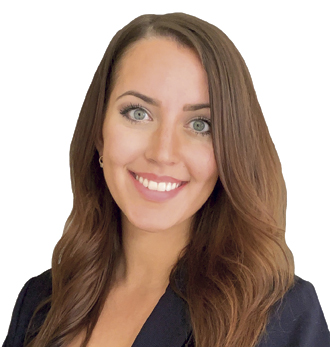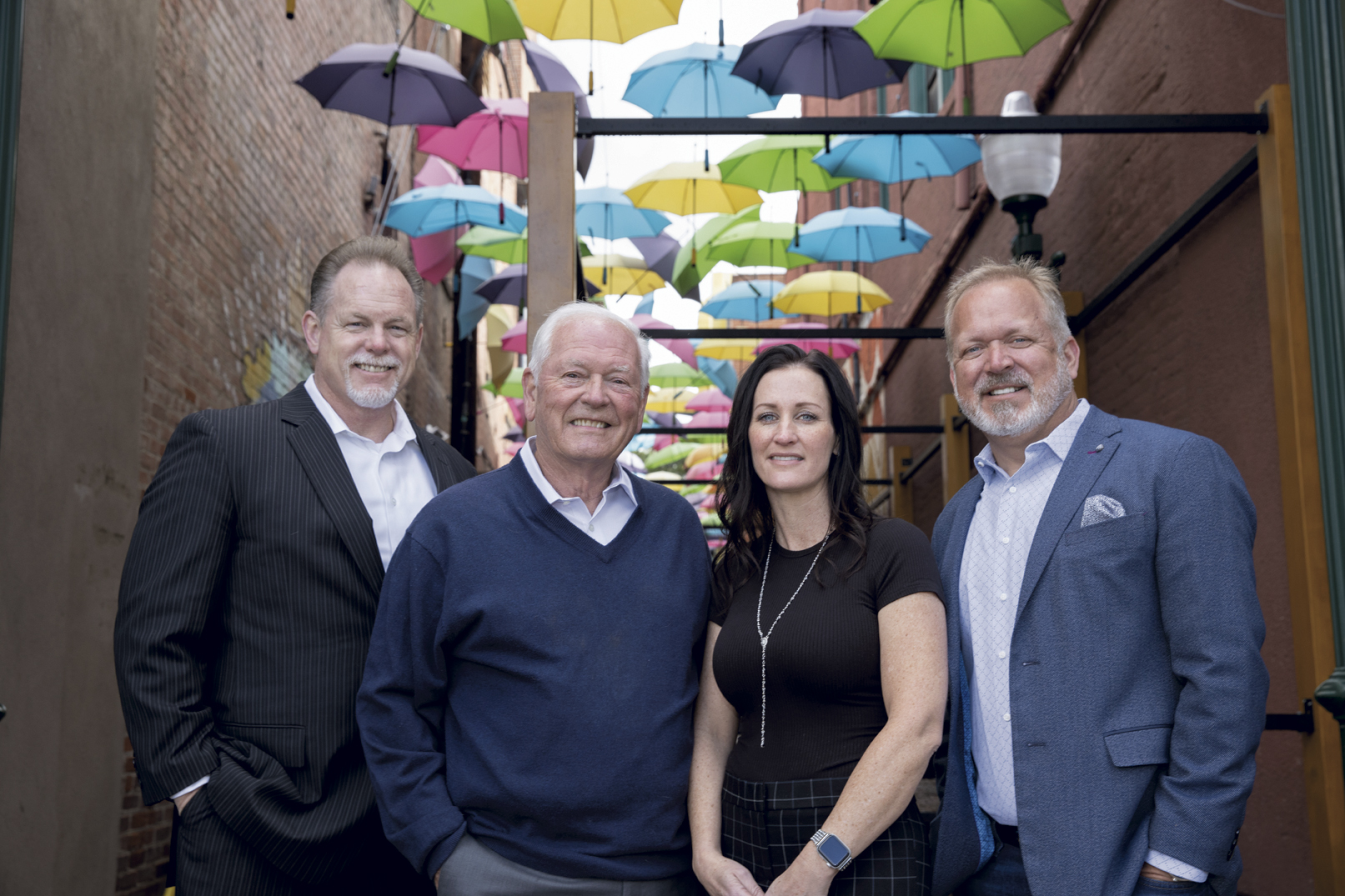Young Professionals
GETTING YOUR FEET WET WITH SOCIAL NETWORKING
Tips for using LinkedIn and Facebook for your business
By Christopher W. Cook
Previously in Young Professionals …
If this were a video production, a cool montage would be inserted here, maybe with a car chase, some explosions and lots of dramatic dialogue. Use your imagination.
That was fun. Back to reality. Last time, we discussed social media best practices shared in a session at the 2020 Private Risk Management Association (PRMA) Virtual Summit. The topic was “getting your feet wet using Instagram for your business.” Let’s press on with some tips for using LinkedIn and Facebook that were also discussed at the PRMA Summit.
Launched in 2003, “LinkedIn is the largest professional networking site and has over 610 million members,” said Kelly Viviano, senior director of corporate communications at H.W. Kaufman Group, parent company of Burns & Wilcox. “It’s based on the principles of connecting to others, posting updates, engaging with content and instant messaging. Your profile essentially be-comes your résumé and your company page becomes your calling card, making it easier for clients to access information about you and your company.
“The majority of LinkedIn’s audience is highly educated with above average income. Specific to high-net-worth (HNW)individuals in your target audience, LinkedIn is the second most popular social media channel among millionaires. If you’re ready to engage with HNW individuals on social media with the goal of building trust and awareness, LinkedIn gives you a pretty good start.”
Aside from displaying your “résumé,” what should be your goal?
“As an insurance agent or broker, a primary objective in social media is to become a voice of authority in your sector and to generate awareness,” Viviano said. “You do that by creating a consistent story that is in alignment with your brand, which will ultimately help define your tone and make it easier to generate posts.
“First, you want to make sure you establish what your brand is. I was always taught to see your brand as if it were a box of cereal competing in a supermarket against similar boxes of cereal. What makes you different from the boxes next to you? Ultimately, that’s your talent, your values and your promise all wrapped into one.”
Once your brand is defined, consider what content would be relevant for your audience.
“High-net-worth individuals primarily see the bigger picture; they want to know what’s going on in the market, how that affects them, recommendations for what they should be doing, and they want to know about new products,” Viviano said. “Ultimately, they look for new opportunities or better ways to protect their own investments. You’ll want to post about topics that address their problems and desires, provide insights that are aligned with your products and services, and demonstrate how you can help solve those problems.”
“The beauty of social media—and specifically LinkedIn—is that there’s already so much content out there that you can easily repurpose and share,” added Leah Socia, social media manager at H.W. Kaufman Group.
“Similar to other social platforms and search engines, LinkedIn follows an algorithm that prioritizes three things: personal connections, relevant content, and engagement. Keeping these three elements in mind when posting will give you a better chance of reaching a larger audience.”
When it comes to personal connections, “you should grow your network based on who you want to see your posts,” Socia said. “Without a following, your posts will not be seen.
“By growing your following, you’re also growing the potential number of impressions your posts will receive and increasing the chances that your post will be shared with other networks, therefore allowing additional engagements and potential new connections and clients.”
As for post-sharing best practices, “avoid constantly selling things,” Socia recommended. “Similar to watching TV, we all typically fast forward or skip the commercials. Your social feed should not constantly be advertising something; doing so may cause you to lose follow-ers. We typically follow a 60/40 ratio, where 60% of our posts are relevant, engaging content and 40% of our posts are selling. A good mix of those should keep your followers engaged and on your page.”
Engagement on others’ pages is equally important.
“LinkedIn takes into account the timeliness of commenting on a post when you share something,” Socia said. “If someone comments on one of your posts, whether it be a question or feedback, you should respond as quickly as possible. Your responses count as an action, and the faster your interactions build on your posts, the higher your posts will appear on other users’ newsfeeds.”

—Leah Socia
Social Media Manager
H.W. Kaufman Group
Additional info
On LinkedIn, an individual can create two different kinds of accounts—personal or company.
“With a personal page you are able to share content that is more specific to you; adding a personal touch to your posts typically results in higher engagement,” Socia said. “You’ll also have more of an opportunity to engage with your specific contacts, whether it’s sharing a quick post about a meeting you just had, wishing someone a happy birthday, or giving a shout-out to one of your colleagues.
“A company page should have a different approach. All posts should have a professional tone and be less about your personal achievements. Although less personal, there’s an opportunity to be seen by a larger audience, with the option to promote your posts.
“It’s totally free to share organic content on LinkedIn,” Socia said. “Whether you’re growing your following, increasing sales or promoting brand awareness, you can do all of it without spending a dollar.”
Paid content requires a company profile, and these efforts can be targeted by geographic area, interests, places of employment and job titles, among others.
“To have a successful campaign, you should also be posting organic content regularly,” Socia said. “All organic content can stand on its own; paid content should be a supplement to your existing organic content.”
Paid content also offers more robust reporting and analytics to track your posts’ performance.
Developed at Harvard College in 2004 and with over 2.7 billion users as of Q2 2020, according to Statista data, Facebook is the world’s largest social platform and is ideal for business networking.
“Everybody needs a personal Facebook profile to access opportunities from a business standpoint,” said Julie Gu-Scallen, director of audience development at Hagerty. “A business account unlocks a lot of advertising and promotion opportunities that you don’t necessarily have should you just keep a personal account.”
To start a business page, you first must determine which category best fits.
“I would recommend a local business because it allows you to tap into Google, where you can drive traffic directly to your brick-and-mortar store,” Gu-Scallen said. “The other opportunities are a public figure page or a separate company, organization or institution page.” The latter is used if you don’t have a physical storefront or most of your business activity takes place online.
Once a page is created and you’re ready to start adding content, start thinking from an SEO perspective, Gu-Scallen advised.
“The algorithm for a Facebook search functions very much like Google, so you want to think about key phrases,” she said. “Not only do you want to talk about insurance, but specifically about the kind of insurance you’re promoting or the products and services you offer.
“After you show up in search results and potential customers are brought to your page, you need to give them the opportunity to take an action so you’re not wasting the time and attention this person has given you. Leverage that ‘call to action’ button on your page. For example, the button can go direct to a phone number, and anybody who is on a mobile device can click that call button and dial you directly.”
Let’s backtrack one second, because before you begin posting you should double check that your page has the appropriate settings.
“Settings are important because they allow you to customize your page exactly according to your needs,” Gu-Scallen said. “First, you want to make sure you’re enabling your notifications so you are being prompted as soon as somebody messages you, so you can respond in a timely fashion. Two, you want to allow others to post, which enables people to post positive reviews. The same goes for any negative experiences, so you want to make sure that you’re moderating at all times.
“Lastly, you can also set your preferred audience. This says, ‘this is who I am, and this is who I’m looking for in terms of my customers and clients,’ and then Facebook will try to serve that audience to you through friends of friend connections or from demographic, gender, geo or interest-based standpoints.”

—Julie Gu-Scallen
Director of Audience Development
Hagerty
Best practices
When it comes to the content you’re posting, “you want to leverage open-ended questions as much as possible; that always helps encourage discussion,” said Gu-Scallen. “Rather than making a statement like ‘I love Mustangs,’ say, ‘Mustangs are the best; what do you think?’
“Keep your copy short and sweet. Think about news headlines; you want to make sure that you’re telling the most important information first and that you’re not misleading your audience. Include images and videos whenever possible; they make a post more engaging.
“Ultimately, success on social media is purely dependent on frequency and testing and learning,” she continued. “You do not have to dedicate hours of your time every day to social media. Take 10 minutes a day every morning to scan your newsfeed, comment on a few things and post; just make sure you’re doing that consistently. Check in with people at least once or twice a week.
“Moderate your account with care. Online interactions are the same as face to face. So if it’s not something you would say in person, it’s probably something you don’t want to say online either.”
Similar to other platforms, you want to engage with others’ content and respond within 24 hours, especially to complaints.
“You want to personalize and humanize the experience,” said Gu-Scallen. “Make sure you’re using people’s usernames or handles and sign off with your own name. If multiple people are managing your page, make sure your customers are aware of the people with whom they might be interacting when they engage with your company’s page.”
Facebook also offers both organic and paid content. Organic content is anything that’s not paid for and is shown to only a fraction of the people who follow your page. Paid content allows you to target individuals who are not following your page but have similar interests or demographics.
Three key areas of paid content are:
- Boosted posts. This method allows you to take an organic post already created and have it reach a larger audience over a period of time.
- Sponsored posts. This uses an organic post and includes additional ad placement types, objectives and targeting capabilities.
- Dark posts. These never appear on an individual’s timeline and are available only when embedded in an ad. They include all ad placement types, objectives, and targeting capabilities.
When paying for content on any platform, it’s important to have goals and an objective. Maybe it’s brand awareness, consideration of a new product you recently launched or a new service you are offering, or maybe it’s to get a potential client to take action with your company, like signing up for a newsletter or filling out an online application.
When it comes to choosing a format, images and videos work well. Another option is a carousel, which displays “multiple images across one ad,” Gu-Scallen said. “It’s great if you’re talking about multiple individual products. There’s also a lead form, which already has information about a user like name, email address and location. It takes the effort out of it because they click on the ad and go to the screen where all their information is prefilled based on what Facebook knows about them. All they need to do is verify and submit.”
For more information:
Hagerty
www.hagerty.com
H.W. Kaufman
www.hwkaufman.com
Private Risk Management Association
www.privateriskmanagement.org






